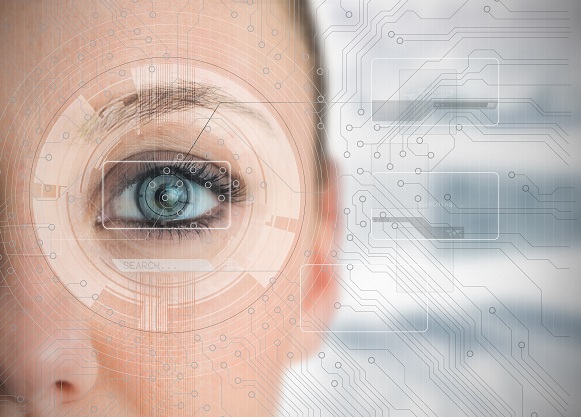
An important trend in biometrics is digitization. For certain workflows, you can use it to prove that a person has done something specific. We see that Workforce Management is using it more and more. Not just for clocking in and out, but also for checking whether all rules and regulations are being observed. For example: is someone allowed to do certain work? But you can also improve the rights and well-being of employees with it. Is the person who is working today actually scheduled at this time? Are his breaks respected? And by registering this, you can avoid time-consuming discussions afterwards.
Biometric access control
Most people think of biometric recognition primarily in terms of high-quality access control. This involves a limited number of types of access that are secured in this way. For example, access to a data center, bank vault or laboratory. Until recently, biometric access control was a stopper of speed. It took a while for a device to scan and recognize a finger or iris. Today, however, there is equipment that does this in a fraction of a second! It is enough to wave your hand in front of such a device. As soon as the scanner recognizes one of the four fingers, the user is granted access. This makes biometric identification very suitable for places where many people have to be subjected to an access control in a short period of time. Think of airports, stadiums and factories where thousands of people check in at the same time.
Cloud
Another important trend in biometrics is the cloud. As in other areas of IT, the cloud offers many advantages in this area. As a company, you no longer need your own server. This makes installation, management and your own security a thing of the past. Especially if you have a company with many branches, this is handy. For a fast food chain, for example, it is almost impossible to install and maintain a server in every restaurant. Not to mention security. The chances of things going wrong in one place are many times greater than with a cloud solution, where the entire IT infrastructure with all the servers is housed in a centrally secured data center.
Tenant management
The cloud solution also enables tenant management. This allows you to manage different installations. You have a complete and accurate overview of how many people are in the building, in which room and who is scheduled for today. From a distance, these access rights can be immediately activated or deactivated at an individual level. This also offers possibilities for advanced Workforce Management. In a production environment or distribution center, you can prepare two or three different tasks for each individual employee to work on at the start of their shift. By allowing someone to choose, you increase employee satisfaction and reduce absenteeism.
3D fingerprinting and iris scanning
The first biometric recognitions used a fingerprint in two dimensions. A user put his finger on a screen and the device made a scan. Today, this can also be done touchless in three dimensions (3D). A user puts his finger in the opening of the device. Without having to touch the device, this takes three to five times as many fingerprint sets as a two-dimensional scan. A 3D fingerprint set has the same level of security as a scan of an iris. Other body features used for biometric recognition are facial recognition and the vein pattern of a hand. However, facial recognition has the disadvantage of being much less reliable. There are millions of high-resolution photos of people on social media, so it is susceptible to fraud. A hand with veins is a larger surface than a fingerprint and therefore has far fewer features per square centimeter than a fingerprint or iris. This also makes recognition via hand vein less reliable.
Biometric identification
Security can be further increased by not taking a photo of a (3D) fingerprint but identification points. Transforming these into a template creates an encrypted data code that cannot be traced back to the fingerprint or iris. Even if a malicious party were to hack the database containing these codes, the codes are useless. The data encryption persists on three locations: on the device, during transmission and on the server. This data code only contains the user’s identification number, first and last name and the encrypted biometric data. Security can be increased even further by using two-factor authentication (2FA): after a user has identified himself with his card or PIN code, biometric verification follows, for example with a finger or iris. In this verification mode, each reader can identify 100.000 users. Customers can choose to activate this additional level of security contained in the software.
Flexibility, scalability and futureproofing
Interflex has fully integrated TBS’ biometric technologies into its access control software so that the user experiences it as a single solution. End users can choose their ideal biometric device from one of the largest portfolios on the market. Different sensor technologies and devices can also be easily combined within one installation or company: personnel management, access control, visitor management and time recording. All products and services are suitable for small and large installations. The cloud solution further increases scalability. TBS and Interflex continuously align research and developments in biometric identification to continue to provide customers with the most advanced solutions.
